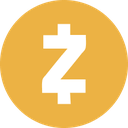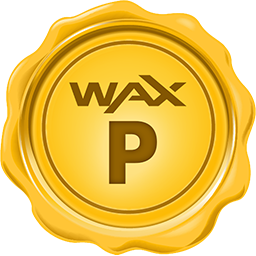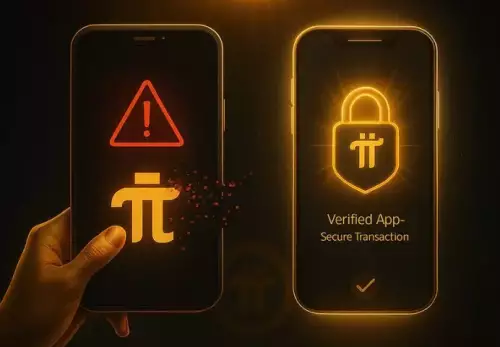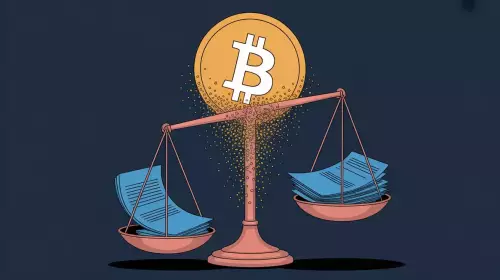 |
|
 |
|
 |
|
 |
|
 |
|
 |
|
 |
|
 |
|
 |
|
 |
|
 |
|
 |
|
 |
|
 |
|
 |
|
블록체인에서 디지털 토큰을 사용하여 실제 자산의 소유권을 표현하는 자산 토큰화는 자산 관리의 변혁적인 힘으로 주목을 받고 있습니다. 접근을 민주화하고, 시장 효율성을 향상하고, 보안을 강화할 수 있는 잠재력을 지닌 자산 토큰화는 지속적인 탐구 및 개발의 주제입니다. 주요 이점에는 보다 포괄적인 참여를 가능하게 하는 부분 소유권, 비용을 절감하는 간소화된 거래 프로세스, 블록체인 기술의 고유한 보안 및 투명성이 포함됩니다. 그러나 규제 불확실성, 시장 채택 및 운영 복잡성과 같은 문제를 해결하려면 효과적인 구현을 위해 블록체인 전문가, 기존 금융 리더 및 규제 기관의 공동 노력이 필요합니다.

Asset Tokenization: Unlocking the Potential of Traditional Assets in the Digital Age
자산 토큰화: 디지털 시대의 전통 자산 잠재력 활용
As the realm of finance evolves, blockchain technology has emerged as a potent force, enabling the creation of digital assets known as tokenized assets. This innovative approach to asset management holds immense promise in transforming the investment landscape, merging the worlds of cryptocurrencies and traditional finance.
금융 영역이 발전함에 따라 블록체인 기술은 토큰화된 자산으로 알려진 디지털 자산의 생성을 가능하게 하는 강력한 힘으로 부상했습니다. 자산 관리에 대한 이러한 혁신적인 접근 방식은 암호화폐와 전통 금융의 세계를 통합하여 투자 환경을 변화시키는 데 엄청난 가능성을 가지고 있습니다.
What is Asset Tokenization?
자산 토큰화란 무엇입니까?
Asset tokenization involves the conversion of ownership rights for real-world assets into digital tokens. These tokens represent a stake in the underlying asset, be it physical property like real estate, digital art, or even intangible assets such as equity shares. The tokenization process enables fractional ownership, allowing investors to acquire shares of high-value assets that were previously inaccessible due to their exclusive nature.
자산 토큰화에는 실제 자산에 대한 소유권을 디지털 토큰으로 전환하는 작업이 포함됩니다. 이러한 토큰은 부동산, 디지털 아트와 같은 물리적 자산 또는 지분과 같은 무형 자산 등 기본 자산의 지분을 나타냅니다. 토큰화 프로세스는 부분 소유권을 가능하게 하여 투자자가 이전에는 독점 특성으로 인해 접근할 수 없었던 고가치 자산의 지분을 획득할 수 있게 해줍니다.
The Role of Blockchain Technology
블록체인 기술의 역할
Blockchain, the underlying technology of cryptocurrencies like Bitcoin and Ether, forms the bedrock of asset tokenization. Its decentralized nature and immutable ledger system provide a secure, transparent, and fraud-resistant platform for tracking asset ownership and transferring tokens. The decentralized structure eliminates the need for intermediaries, fostering greater trust and reducing the risk of malicious activity.
비트코인, 이더리움 등 암호화폐의 기반 기술인 블록체인은 자산 토큰화의 기반을 형성합니다. 분산된 성격과 불변의 원장 시스템은 자산 소유권을 추적하고 토큰을 전송하기 위한 안전하고 투명하며 사기 방지 플랫폼을 제공합니다. 분산형 구조는 중개자의 필요성을 제거하여 더 큰 신뢰를 조성하고 악의적인 활동의 위험을 줄입니다.
The Tokenization Process
토큰화 프로세스
The journey from real-world asset to digital token on a blockchain involves several steps:
실제 자산에서 블록체인의 디지털 토큰으로의 여정에는 여러 단계가 포함됩니다.
- Token Creation: Legal entities are established to hold the underlying asset. Digital tokens are created to represent shares of ownership in these entities, entitling holders to a proportionate share of the asset's value and benefits.
- Smart Contract Implementation: Smart contracts govern all aspects of token issuance, balance tracking, and reward distribution. These self-executing programs run on the blockchain, đảm bảo transparency and efficiency.
- Token Distribution and Sale: Once the tokens and smart contracts are in place, they are sold to investors through private or public sales. Fractionalization enables tokenized assets to reach a broader market, boosting liquidity.
- Asset Management and Governance: Token holders actively participate in managing the underlying asset, whether it involves property maintenance, tenant relations, or investment decisions. The charter of the holding entity and smart contract protocols define the level of control and voting rights granted to token holders.
- Secondary Market Trading: Tokenized assets can be traded on secondary markets, offering investors greater flexibility and liquidity. Unlike traditional asset transactions, these trades can be executed swiftly and easily, without the need for lengthy processes or the sale of the entire asset.
Benefits of Asset Tokenization
토큰 생성: 기본 자산을 보유하기 위해 법인이 설립됩니다. 디지털 토큰은 이러한 엔터티의 소유권 지분을 나타내기 위해 생성되어 보유자에게 자산 가치와 혜택의 비례적인 지분을 부여합니다. 스마트 계약 구현: 스마트 계약은 토큰 발행, 잔액 추적 및 보상 분배의 모든 측면을 관리합니다. 이러한 자체 실행 프로그램은 블록체인에서 실행되어 투명성과 효율성을 보장합니다. 토큰 배포 및 판매: 토큰과 스마트 계약이 완료되면 비공개 또는 공개 판매를 통해 투자자에게 판매됩니다. 분할화를 통해 토큰화된 자산이 더 넓은 시장에 진출할 수 있어 유동성이 향상됩니다. 자산 관리 및 거버넌스: 토큰 보유자는 자산 유지 관리, 임차인 관계 또는 투자 결정과 관련된 기본 자산 관리에 적극적으로 참여합니다. 지주 법인 헌장과 스마트 계약 프로토콜은 토큰 보유자에게 부여되는 통제 및 투표권 수준을 정의합니다. 2차 시장 거래: 토큰화된 자산은 2차 시장에서 거래될 수 있어 투자자에게 더 큰 유연성과 유동성을 제공합니다. 전통적인 자산 거래와 달리 이러한 거래는 시간이 많이 걸리는 프로세스나 전체 자산 판매 없이 신속하고 쉽게 실행될 수 있습니다.자산 토큰화의 이점
Asset tokenization extends far beyond technological innovation; it holds the potential to reshape asset management, bringing forth a myriad of benefits:
자산 토큰화는 기술 혁신 그 이상으로 확장됩니다. 이는 자산 관리를 재구성하여 수많은 이점을 가져올 수 있는 잠재력을 가지고 있습니다.
- Democratization of Access: By breaking down barriers to entry, asset tokenization empowers individuals with the opportunity to participate in investment markets previously reserved for institutional investors and high-net-worth individuals. Fractional ownership allows retail investors to invest in high-value assets, diversifying their portfolios and accessing new investment avenues.
- Market Fluidity and Efficiency: Tokenization enhances market liquidity and efficiency by introducing fractional ownership. It makes illiquid assets like real estate readily accessible, allowing investors to buy and sell tokens representing fractional ownership. Blockchain technology and smart contracts streamline the transaction process, reducing intermediaries, transaction times, and costs, resulting in 24/7 global markets for tokenized assets.
- Security and Transparency: Blockchain's decentralized nature provides unparalleled security, eliminating the risk of tampering and enhancing investor confidence in the integrity of their holdings and transactions. The transparent nature of blockchains safeguards against fraud by making all wallet holdings and transactions visible in real time, enabling easy identification and evaluation of any unauthorized activity.
Use Cases for Asset Tokenization
접근성의 민주화: 자산 토큰화는 진입 장벽을 허물어 이전에 기관 투자자와 고액 자산가를 위해 마련되었던 투자 시장에 참여할 수 있는 기회를 개인에게 부여합니다. 부분 소유권을 통해 소매 투자자는 고가치 자산에 투자하고 포트폴리오를 다양화하며 새로운 투자 방법에 접근할 수 있습니다. 시장 유동성 및 효율성: 토큰화는 부분 소유권을 도입하여 시장 유동성과 효율성을 향상시킵니다. 이는 부동산과 같은 비유동 자산에 쉽게 접근할 수 있게 하여 투자자들이 부분 소유권을 나타내는 토큰을 사고 팔 수 있게 해줍니다. 블록체인 기술과 스마트 계약은 거래 프로세스를 간소화하고 중개자, 거래 시간 및 비용을 줄여 토큰화된 자산을 위한 연중무휴 글로벌 시장을 창출합니다. 보안 및 투명성: 블록체인의 분산 특성은 비교할 수 없는 보안을 제공하여 변조 위험을 제거하고 투자자 신뢰를 향상시킵니다. 보유 및 거래의 무결성. 블록체인의 투명한 특성은 모든 지갑 보유 및 거래를 실시간으로 표시하고 무단 활동을 쉽게 식별하고 평가할 수 있도록 하여 사기로부터 보호합니다.자산 토큰화 사용 사례
The versatility of asset tokenization extends to a wide range of asset classes:
자산 토큰화의 다양성은 광범위한 자산 클래스로 확장됩니다.
- Tokenized Real Estate: Real estate is a prominent example of an asset poised to benefit from tokenization. It eliminates the need for large upfront investments and complex loan arrangements, allowing investors to access high-value properties with greater ease. Tokenization opens up commercial real estate investment to a broader investor base, enhancing liquidity in a traditionally illiquid market.
- Tokenized Bonds: Tokenization streamlines the bond issuance process and automates management aspects such as interest payments and maturity settlements. It leads to increased efficiency and accessibility in bond markets by reducing intermediaries and transaction costs.
- Tokenized Carbon Credits: Carbon credits are financial instruments representing businesses' emission reductions. Tokenization enhances the transparency and efficiency of carbon credit markets, facilitating the buying and selling of credits by businesses of all sizes. This approach unlocks new opportunities within the green economy by broadening the pool of potential participants.
Risks and Challenges
토큰화된 부동산: 부동산은 토큰화로 이익을 얻을 수 있는 자산의 대표적인 예입니다. 대규모 선불 투자와 복잡한 대출 준비가 필요하지 않아 투자자가 고부가가치 부동산에 더욱 쉽게 접근할 수 있습니다. 토큰화는 더 넓은 투자자 기반에 상업용 부동산 투자를 개방하여 전통적으로 비유동적인 시장에서 유동성을 향상시킵니다. 토큰화 채권: 토큰화는 채권 발행 프로세스를 간소화하고 이자 지불 및 만기 결제와 같은 관리 측면을 자동화합니다. 이는 중개자와 거래 비용을 줄임으로써 채권 시장의 효율성과 접근성을 향상시킵니다. 토큰화된 탄소 배출권: 탄소 배출권은 기업의 배출 감소를 나타내는 금융 수단입니다. 토큰화는 탄소배출권 시장의 투명성과 효율성을 향상시켜 모든 규모의 기업에서 배출권 구매 및 판매를 촉진합니다. 이 접근 방식은 잠재적 참가자 풀을 확대하여 녹색 경제 내에서 새로운 기회를 열어줍니다.위험과 과제
While asset tokenization presents a wealth of opportunities, it is not without its challenges:
자산 토큰화는 풍부한 기회를 제공하지만 다음과 같은 과제도 있습니다.
- Regulatory Uncertainty: Digital asset regulation remains a fluid landscape in many jurisdictions, including the United States. This uncertainty can create risks for tokenized asset issuers and purchasers, especially in cross-border transactions involving multiple jurisdictions.
- Market Adoption and Liquidity: The promise of increased liquidity in tokenized assets is contingent upon widespread market adoption. Without investor trust in tokenized assets and blockchain technology, combined with the necessary infrastructure, market development may be hindered.
- Current Security Risks: Despite the inherent security of blockchain technology, some crypto projects face security threats, mainly related to the hacking of DeFi protocols. While institutions may address these concerns by employing private blockchains, it may result in trade-offs that reduce the potential benefits of asset tokenization.
- Operational Complexity: Asset tokenization introduces new complexities in integrating traditional asset management strategies with blockchain technologies. Investors and issuers need robust wallet infrastructure, potentially different from current technologies, to manage their tokenized assets.
- Valuation Concerns: The valuation of tokenized assets, especially in niche asset classes or those lacking established, liquid markets, can be challenging. This may lead to unexpected volatility or pricing discrepancies, potentially impacting investor returns and market stability.
- The Education Gap: A significant knowledge gap exists in the market, with many potential investors and participants unfamiliar with asset tokenization, its benefits, and its risks. Overcoming this barrier is crucial for the widespread adoption and success of asset tokenization.
Overcoming Challenges
규제 불확실성: 디지털 자산 규제는 미국을 포함한 많은 관할권에서 여전히 유동적인 환경으로 남아 있습니다. 이러한 불확실성은 특히 여러 관할권이 포함된 국경 간 거래에서 토큰화된 자산 발행자와 구매자에게 위험을 초래할 수 있습니다. 시장 채택 및 유동성: 토큰화된 자산의 유동성 증가에 대한 약속은 광범위한 시장 채택에 달려 있습니다. 필요한 인프라와 결합된 토큰화된 자산 및 블록체인 기술에 대한 투자자의 신뢰가 없으면 시장 개발이 방해받을 수 있습니다. 현재 보안 위험: 블록체인 기술의 고유한 보안에도 불구하고 일부 암호화폐 프로젝트는 주로 DeFi 프로토콜 해킹과 관련된 보안 위협에 직면해 있습니다. 기관은 프라이빗 블록체인을 사용하여 이러한 문제를 해결할 수 있지만 자산 토큰화의 잠재적 이점을 감소시키는 상충 관계가 발생할 수 있습니다. 운영 복잡성: 자산 토큰화는 기존 자산 관리 전략을 블록체인 기술과 통합하는 데 새로운 복잡성을 도입합니다. 투자자와 발행자는 토큰화된 자산을 관리하기 위해 잠재적으로 현재 기술과 다른 강력한 지갑 인프라가 필요합니다. 가치 평가 우려: 특히 틈새 자산 클래스 또는 확립된 유동 시장이 부족한 자산 클래스에서 토큰화된 자산의 가치 평가는 어려울 수 있습니다. 이는 예상치 못한 변동성 또는 가격 불일치로 이어질 수 있으며 잠재적으로 투자자 수익 및 시장 안정성에 영향을 미칠 수 있습니다. 교육 격차: 많은 잠재적 투자자와 참가자가 자산 토큰화, 그 이점 및 위험에 익숙하지 않아 시장에 상당한 지식 격차가 존재합니다. 이 장벽을 극복하는 것은 자산 토큰화의 광범위한 채택과 성공을 위해 매우 중요합니다.과제 극복
Addressing the challenges associated with asset tokenization requires collaborative efforts:
자산 토큰화와 관련된 문제를 해결하려면 다음과 같은 공동 노력이 필요합니다.
- Collaboration and Innovation: Collaboration between blockchain technology experts, traditional finance leaders, and regulators is essential to ensure the productive and secure advancement of asset tokenization.
- Regulatory Clarity: Establishing clear and consistent regulatory frameworks will provide guidance for tokenized asset issuers and investors, fostering market growth and innovation.
- Education and Awareness: Comprehensive education programs and awareness campaigns will empower potential investors and market participants with the knowledge necessary to make informed decisions.
- Technological Advancements: Ongoing advancements in blockchain technology and digital asset security will address current challenges, enhancing the security and reliability of tokenized assets.
Asset Tokenization Today: Examples
협업 및 혁신: 자산 토큰화의 생산적이고 안전한 발전을 보장하려면 블록체인 기술 전문가, 기존 금융 리더 및 규제 기관 간의 협업이 필수적입니다. 규제 명확성: 명확하고 일관된 규제 프레임워크를 확립하면 토큰화된 자산 발행자와 투자자에게 지침을 제공하여 시장을 육성할 수 있습니다. 성장과 혁신. 교육 및 인식: 포괄적인 교육 프로그램과 인식 캠페인은 잠재 투자자와 시장 참가자에게 정보에 입각한 결정을 내리는 데 필요한 지식을 제공할 것입니다. 기술 발전: 블록체인 기술 및 디지털 자산 보안의 지속적인 발전은 현재의 문제를 해결하고 보안을 강화할 것입니다. 및 토큰화된 자산의 신뢰성.오늘의 자산 토큰화: 예
Numerous asset tokenization projects are currently underway, bridging the gap between crypto and traditional finance:
현재 암호화폐와 전통 금융 간의 격차를 해소하는 수많은 자산 토큰화 프로젝트가 진행 중입니다.
- Securitize: Utilizing the Ethereum blockchain, Securitize offers a platform for issuing various types of security tokens.
- Ondo Finance: Ondo provides access to tokenized tradfi assets, such as short-term U.S. Treasuries, through its on-chain Ondo Short-Term US Government Bond Fund.
- Centrifuge: Centrifuge is a dedicated blockchain enabling individuals and businesses to borrow against tradfi assets from DeFi-based lenders.
- Onyx by JP Morgan: JP Morgan's permissioned blockchain, Onyx, facilitates the trading of tokenized assets like U.S. Treasuries and mortgage-backed securities, along with JP Morgan's JPM Coin, a U.S. dollar-pegged stablecoin for interbank payments.
- Goldman Sachs: Goldman Sachs' Digital Assets Platform, developed in collaboration with blockchain software provider Digital Asset, supports the issuance, registration, settlement, and custody of various tokenized assets on the Canton Network blockchain purpose-built for digital asset management.
Asset Tokenization: The Future of Finance
Securitize: Securitize는 Ethereum 블록체인을 활용하여 다양한 유형의 보안 토큰을 발행할 수 있는 플랫폼을 제공합니다. Ondo Finance: Ondo는 온체인 Ondo 단기 미국 정부 채권을 통해 단기 미국 국채와 같은 토큰화된 Tradfi 자산에 대한 액세스를 제공합니다. Fund.Centrifuge: Centrifuge는 개인과 기업이 DeFi 기반 대출 기관으로부터 Tradfi 자산을 빌릴 수 있도록 하는 전용 블록체인입니다. JP Morgan의 Onyx: JP Morgan의 허가형 블록체인 Onyx는 미국 국채 및 모기지 담보 증권과 같은 토큰화된 자산의 거래를 촉진합니다. , 은행 간 결제를 위한 미국 달러 고정 스테이블 코인인 JP Morgan의 JPM 코인과 함께. Goldman Sachs: 블록체인 소프트웨어 제공업체인 Digital Asset과 협력하여 개발된 Goldman Sachs의 디지털 자산 플랫폼은 다양한 자산의 발행, 등록, 결제 및 보관을 지원합니다. 디지털 자산 관리를 위해 특별히 제작된 Canton Network 블록체인의 토큰화된 자산. 자산 토큰화: 금융의 미래
Asset tokenization is a transformative force in the financial realm, poised to revolutionize asset management. Its potential for merging the worlds of crypto and traditional finance is immense, opening up access to a broader range of investment opportunities while fostering efficiency and security.
자산 토큰화는 자산 관리에 혁명을 일으킬 준비가 되어 있는 금융 영역의 변혁적인 힘입니다. 암호화폐와 전통 금융의 세계를 통합할 수 있는 잠재력은 엄청나며, 효율성과 보안을 강화하는 동시에 더 넓은 범위의 투자 기회에 대한 접근을 열어줍니다.
As challenges are addressed through collaboration, innovation, regulation, and education, asset tokenization is set to reshape the way we invest, trade, and manage assets in the digital age.
협업, 혁신, 규제 및 교육을 통해 문제가 해결됨에 따라 자산 토큰화는 디지털 시대에 자산을 투자, 거래 및 관리하는 방식을 재구성할 것입니다.
부인 성명:info@kdj.com
제공된 정보는 거래 조언이 아닙니다. kdj.com은 이 기사에 제공된 정보를 기반으로 이루어진 투자에 대해 어떠한 책임도 지지 않습니다. 암호화폐는 변동성이 매우 높으므로 철저한 조사 후 신중하게 투자하는 것이 좋습니다!
본 웹사이트에 사용된 내용이 귀하의 저작권을 침해한다고 판단되는 경우, 즉시 당사(info@kdj.com)로 연락주시면 즉시 삭제하도록 하겠습니다.
-

-

-

-

-

-

- 연준 총재, FOMC 및 금리: 변화하는 환경 탐색
- 2025-11-07 10:45:56
- 변동하는 경제 지표와 암호화폐 상승 속에서 금리에 대한 연준의 입장을 분석합니다.
-

-

-




















![그래프 가격 예측 [오늘의 GRT 암호화폐 가격 뉴스] 그래프 가격 예측 [오늘의 GRT 암호화폐 가격 뉴스]](/uploads/2025/11/07/cryptocurrencies-news/videos/690d4df44fe69_image_500_375.webp)










































